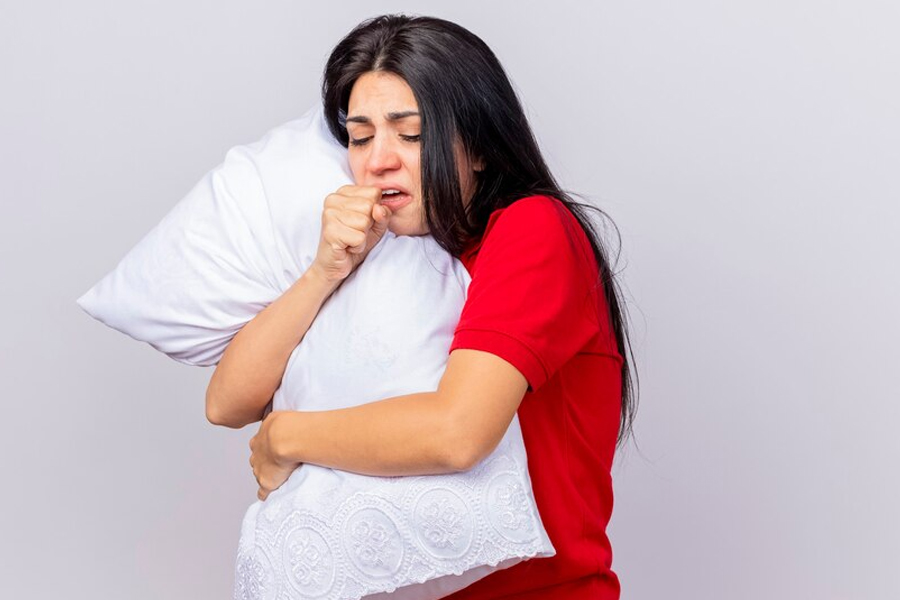
Your pillow might be the last thing one would suspect as a source of discomfort, but it can carry allergens like dust mites, mould, and pet dander, triggering a range of allergy symptoms. If you’ve been waking up sneezing, with itchy eyes, or even skin irritation, you might want to consider washing your pillow covers more often.
Table of Content:-
RELATED: 5 Health Hazards of Using High Pillows
How Do Pillows Trigger Allergies?

Over time, pillows accumulate allergens that can irritate your respiratory system and skin. Dust mites are one of the most common factors. They feed on dead skin cells and leave behind faeces and body parts, which can cause allergic reactions like sneezing, runny nose, and congestion.
Another cause could be attributed to mould, which grows in damp conditions. Pillows exposed to sweat or spills create the perfect breeding ground for mould, releasing spores that can trigger coughing, wheezing, or breathing difficulties.
Pet dander is also a concern. Skin flakes shed by pets often settle in pillows, leading to allergy symptoms. Similarly, pollen, especially during allergy season, can settle on your pillow, causing sneezing, itchy eyes, and a scratchy throat.
How To Know If It Is A Pillow Allergy?
Allergy symptoms can be similar to other respiratory issues, making it challenging to pinpoint the cause. However, signs such as sneezing, watery eyes, a stuffy nose, or skin irritation that occur primarily in the morning may indicate pillow allergies. Chronic symptoms, such as headaches or difficulty breathing, could also point to allergens hiding in your pillow.
Tips To Prevent Pillow Allergies
-1736508746673.jpg)
Creating a cleaner and allergen-free sleep environment is key to managing pillow allergies. Follow these tips to ensure a restful and healthy night’s sleep.
- Replacing pillows every 1–2 years prevents the accumulation of irritants.
- Opt for hypoallergenic pillows, as these are made from synthetic fibres or natural options like wool or silk, are designed to resist allergens. These materials keep away dust mites and mould, making them ideal for those suffering from allergies.
- Use covers as these act as a barrier between allergens and your pillow. These covers are effective in preventing dust mites and other allergens from settling in.
- Most importantly, wash your pillows every 3–6 months, following the manufacturer’s care instructions. Your pillowcases and sheets should also be washed weekly in hot water to eliminate allergens.
- High humidity levels encourage mould and dust mite growth. Keep the humidity between 30–50% using a dehumidifier. A clean, dry environment is less likely to harbour allergens.
- Limit pet access to the bedroom. This can significantly reduce allergen exposure.
- Air purifiers with HEPA filters can trap allergens like dust mites, pollen, and pet dander. Keeping one in your bedroom will help create a cleaner breathing environment.
RELATED: Are Your Bed Sheets And Pillow Covers Causing Acne? Ways To Prevent Acne Due To Bedding
Conclusion
Maintaining a clean bedroom environment is essential for minimising allergens. Vacuum carpets and dust regularly, paying special attention to areas where allergens accumulate, like under the bed. This, combined with frequent washing of bedding and pillows, can make a significant difference in alleviating allergy symptoms.
By simply recognising this link between pillows and allergies and taking preventive measures, you can create a healthier environment for yourself and your family.
Also watch this video
How we keep this article up to date:
We work with experts and keep a close eye on the latest in health and wellness. Whenever there is a new research or helpful information, we update our articles with accurate and useful advice.
Current Version